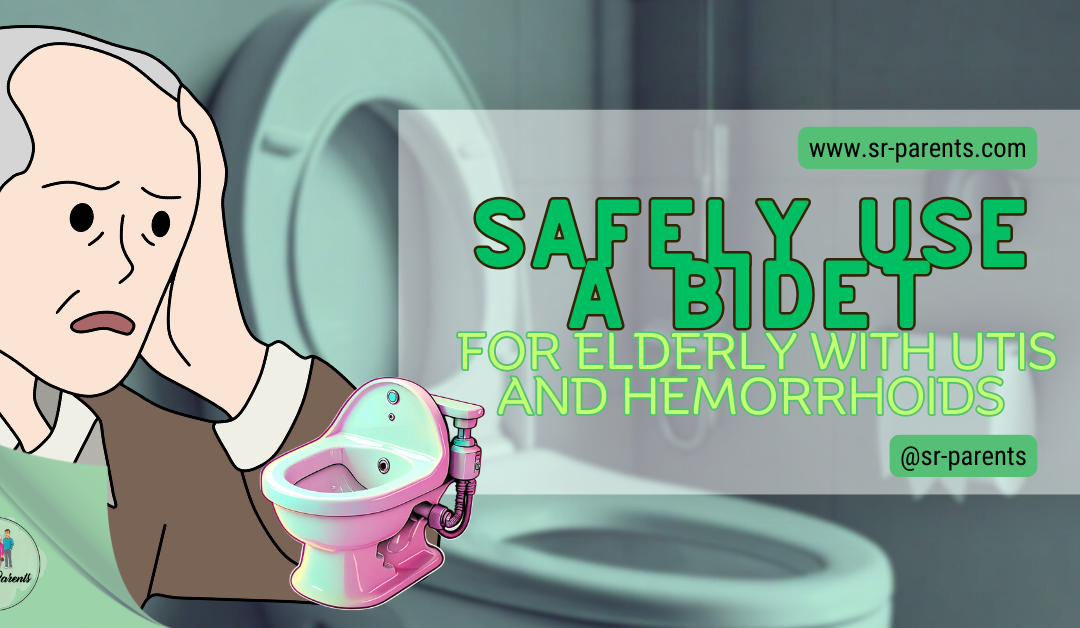For seniors dealing with urinary tract infections (UTIs) or hemorrhoids, everyday hygiene can become a source of discomfort and stress. Fortunately, a bidet for elderly with UTIs and hemorrhoids offers a gentle, effective solution to help maintain cleanliness while minimizing irritation. But how can the elderly use a bidet safely and comfortably? Understanding the right techniques and adjustments can turn this bathroom aid into a true game-changer, offering relief and promoting better hygiene habits.
In this article, we’ll walk you through how to safely introduce bidet use for seniors with UTIs and hemorrhoids, ensuring they enjoy the comfort and cleanliness they deserve. From adjusting the water temperature to selecting the right settings, we’ll cover practical tips to help you or your loved one confidently navigate this essential tool. With the right guidance, a bidet can become a welcome addition to any senior’s daily routine.
Contents
How to Safely Use a Bidet for Elderly with UTIs and Hemorrhoids: A Comprehensive Guide
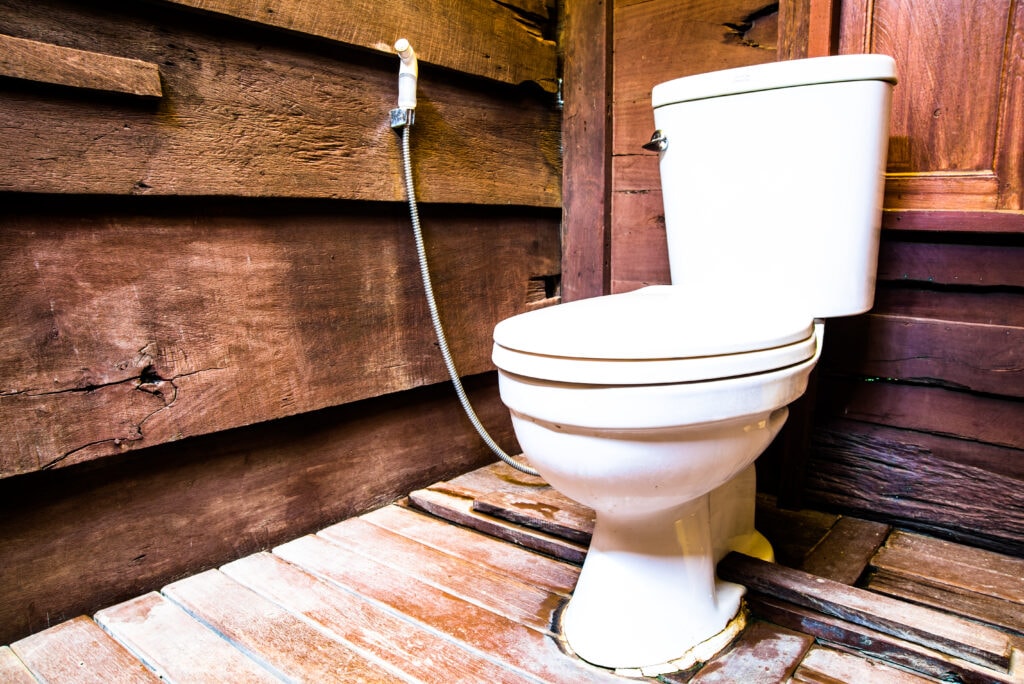
Navigating the waters of personal hygiene as we age can sometimes pose unique challenges. For the elderly, particularly those dealing with urinary tract infections (UTIs) or hemorrhoids, it becomes crucial to maintain cleanliness gently yet effectively. Bidets, which have been widely used across the globe for generations, offer a solution that not only enhances personal hygiene but does so with a level of comfort that traditional methods may lack.
Using a bidet can be a game-changer in achieving a higher standard of personal cleanliness without exacerbating sensitive health issues. For individuals suffering from UTIs, the gentle stream of water from a bidet provides thorough cleansing, critical in preventing the spread of bacteria. Meanwhile, a bidet can offer a soothing, touch-free cleaning option for those suffering from hemorrhoids that minimizes discomfort and irritation often caused by abrasive toilet paper.
Key Takeaways
Bidets enhance hygiene and comfort for the elderly with UTIs and hemorrhoids.
A gentle water stream from a bidet can prevent bacteria from spreading and irritating.
Bidets provide a touch-free cleaning option, reducing discomfort for sensitive conditions.
Understanding Bidets
Bidets provide a hygienic solution for personal cleaning and can be particularly beneficial for seniors dealing with UTIs and hemorrhoids. They offer a gentle alternative to toilet paper that can help prevent irritation.
Benefits for the Elderly with UTIs and Hemorrhoids
For the elderly, a bidet can increase cleanliness and reduce the risk of infection. Using a bidet permits gentle and thorough washing, which can soothe the symptoms of hemorrhoids and mitigate further irritation caused by conventional wiping. Bidets can also be beneficial by providing a hands-free experience that is helpful for those with reduced mobility or arthritis.
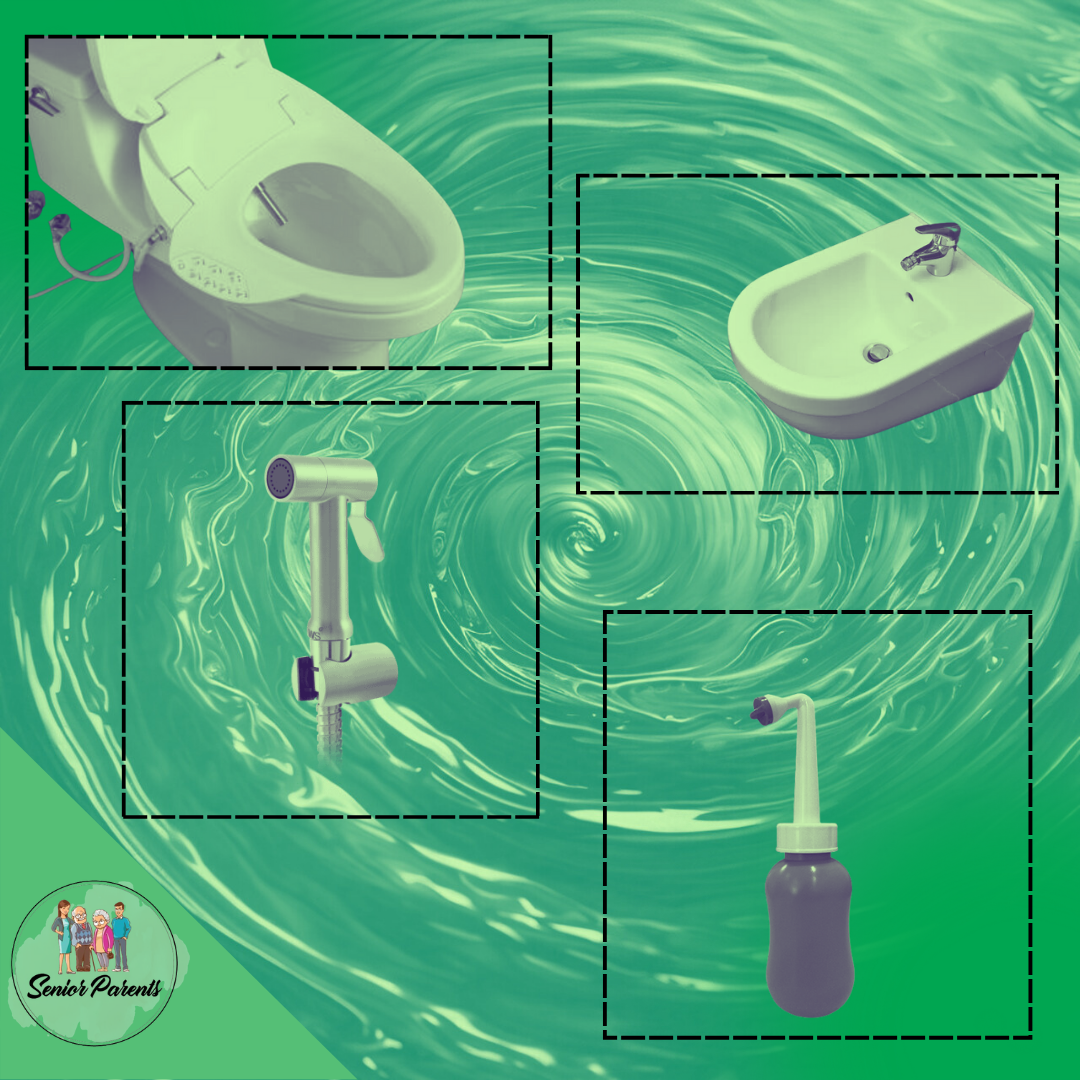
Types of Bidets
Standalone Bidets: Traditional fixtures separate from the toilet, requiring users to move from the toilet to the bidet.
Toilet Seat Bidets: These are integrated into the toilet seat and provide a range of functions, sometimes including air drying and temperature control.
Handheld Bidets: A nozzle attached to the toilet allows for manual water spray control.
Portable Bidets: Small, handheld devices that can be filled with water and squeezed to produce a spray, useful for travel or when space is limited.
Mechanism of Bidet Operation
Bidets generally operate through a nozzle or jet that directs water to the genital and anal areas. The waste is washed away, leaving the user clean without wiping it. Most modern bidets feature adjustable water pressure and temperature settings, allowing users to customize the cleansing experience according to their comfort and specific health needs. Some models also offer additional features like warm air drying to further assist in hygiene and comfort for users with sensitive conditions.
Preparing to Use a Bidet
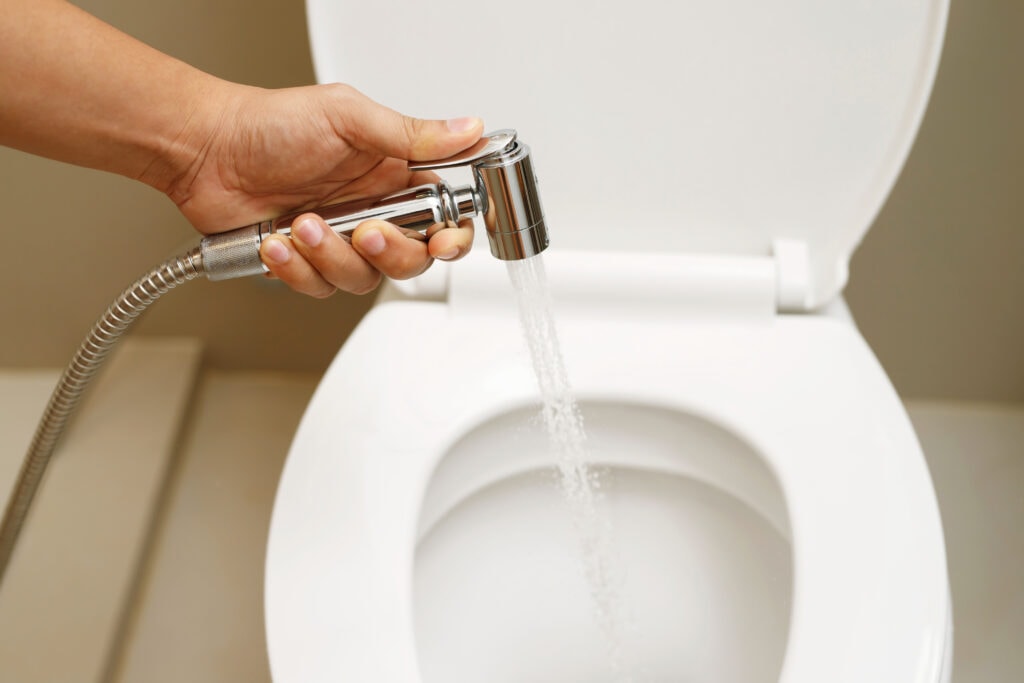
Before an elderly person with UTIs or hemorrhoids begins using a bidet for elderly with UTIs and hemorrhoids, it is crucial to select the appropriate type of bidet, adjust settings to accommodate their sensitivity, and understand the correct positioning techniques. This preparation ensures safety and effectiveness when using a bidet for the elderly with UTIs and hemorrhoids.
Selecting the Right Bidet
When choosing a bidet for elderly individuals with UTIs or hemorrhoids, one should look for features that reduce infection risk and avoid exacerbating sensitive areas. Bidets with adjustable nozzles and gentle stream options, such as those found on wikiHow, are ideal as they allow for personalized cleaning that can be directed away from irritated tissues.
Adjusting Bidet Settings
Before use, it is important to adjust the bidet’s settings to suit the elderly person’s needs. Temperature and pressure are the primary concerns:
Temperature: Start with a warm setting to promote comfort and relaxation of muscles.
Pressure: Opt for a low to medium stream to cleanse gently without causing discomfort or irritation, as detailed by Healthline.
Positioning Techniques
Proper positioning on a bidet is essential, especially for those with hemorrhoids or UTIs:
Sit down comfortably and steadily.
Position oneself so that the stream targets the area without directly hitting sensitive spots, as Healthline and Cleveland Clinic recommended.
Did You Know?
While bidets can be safe if used properly, they can cause bowel perforation when used as an enema. This is especially true for elderly individuals with fragile intestinal tissue. To prevent this, they must keep the water pressure low and the nozzle at a safe distance.
Using the Bidet Safely
When using a bidet for elderly with UTIs and hemorrhoids, it’s essential to observe certain practices to ensure safety and effectiveness while maintaining hygiene and comfort. Proper use of the bidet can help alleviate discomfort and reduce the risk of irritation, making it an ideal solution for seniors with these sensitive health concerns.
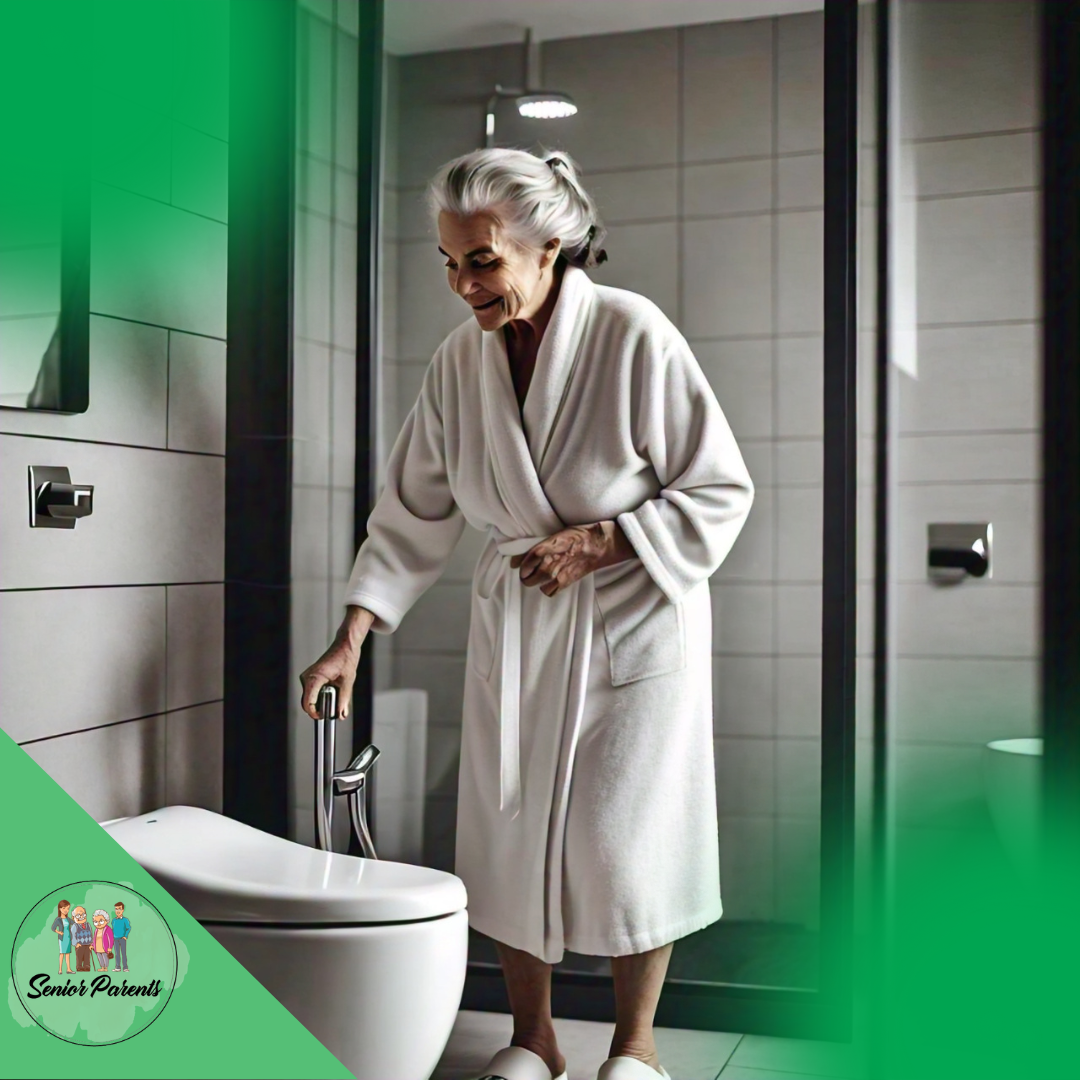
Ensuring Hygienic Practices
Hygiene is paramount when using a bidet, especially for individuals with UTIs. Users should:
Always clean the bidet before use to minimize the risk of infection.
Wash hands thoroughly with soap and water after using the bidet, as Cleveland Clinic Health recommends.
Avoiding Further Irritation
For those with hemorrhoids, a bidet can provide gentle cleansing that is less irritating than toilet paper. To avoid further irritation, they should:
Use lukewarm water, as extreme temperatures can cause discomfort.
Pat dry the area gently with a soft towel instead of rubbing it.
Temperature and Pressure Adjustments
Properly adjusting the bidet’s temperature and water pressure is critical for safety and comfort:
Ensure the water temperature is warm but not hot to prevent burns.
Adjust the water pressure to a comfortable level to avoid aggravating sensitive areas.
Effective Bidet Use for UTIs
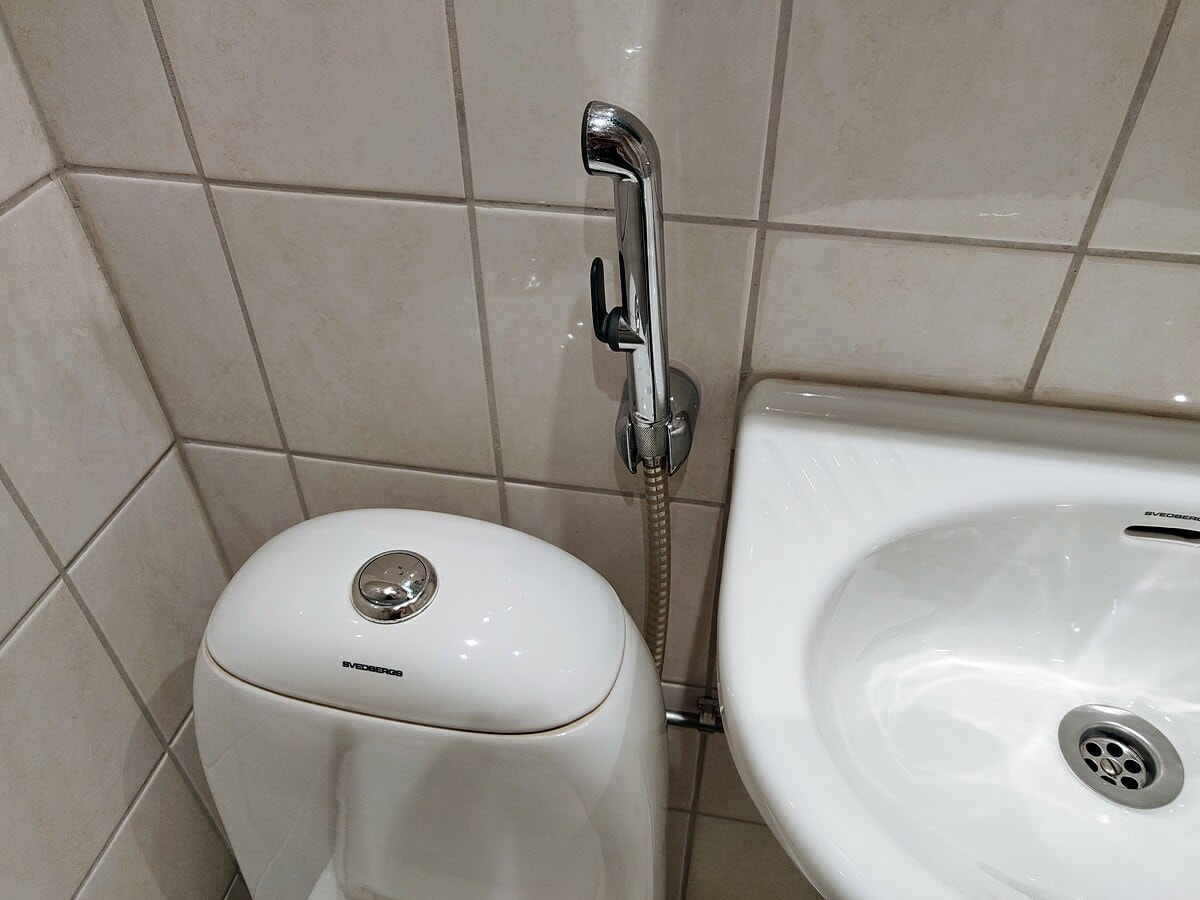
When using a bidet for elderly with UTIs and hemorrhoids, individuals need to follow specific protocols to ensure hygiene and prevent the worsening of their condition. Proper bidet use for elderly with UTIs and hemorrhoids can help minimize discomfort and maintain cleanliness without aggravating sensitive areas.
Cleanliness Protocol
Those with UTIs need to maintain high cleanliness standards when using a bidet. Users should always ensure that the bidet nozzle itself is clean before use. A clean bidet helps reduce the likelihood of introducing new bacteria to the urinary tract. They should gently dry the area with a clean towel after use to minimize moisture, which can encourage bacterial growth.
Frequency of Use
The bidet should be used after each restroom visit for those suffering from UTIs to maintain cleanliness. Adjusting the water temperature to a warm setting can offer a soothing effect without irritation; however, extreme temperatures should be avoided.
Avoiding Contamination
Correct usage is crucial to avoiding contamination that can exacerbate UTIs. The bidet’s water stream should be aimed from front to back, especially for women, to prevent bacteria from the anal area from reaching the urethra. Using features such as feminine wash modes on electric bidets can offer a more targeted clean while reducing the risk of contamination.
Effective Bidet Use for Hemorrhoids
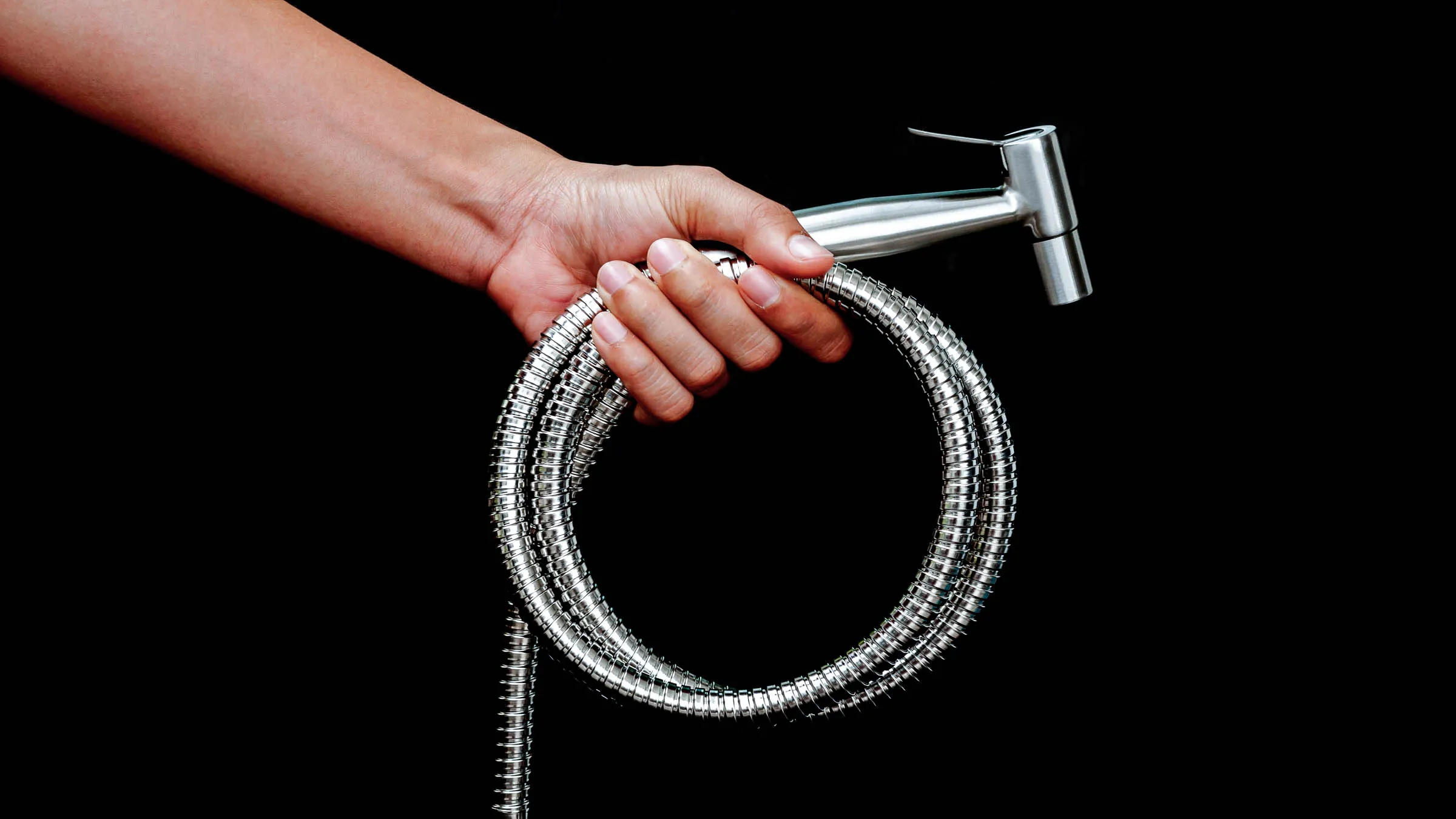
Individuals suffering from hemorrhoids can benefit greatly from the judicious use of a Bidet for Elderly with UTIs and Hemorrhoids, which can provide gentle cleansing without aggravating sensitive tissues. Key considerations include the use of gentle water pressure and soothing features built into the bidet to ensure comfort and relief for those dealing with these conditions.
Gentle Cleansing
For those with hemorrhoids, opting for a bidet that delivers a soft stream of water to avoid irritation is essential. The water should be warm, as this helps in relaxing the anal muscles and can reduce inflammation. Consistent, gentle pressure allows for thorough cleaning without exacerbating hemorrhoids.
Soothing Features to Look For
When selecting a bidet for hemorrhoid relief, certain features can enhance the healing process:
- Adjustable Pressure Settings: This enables users to find the most comfortable intensity.
- Warm Water Option: Aids in soothing irritated tissues and promotes blood flow.
- Soft Spray Pattern: Minimizes discomfort by evenly distributing water.
Bidets that provide air-drying capabilities can also be beneficial in keeping the area dry without harsh rubbing, which can further irritate hemorrhoids.
Post-Use Care
After using the bidet, individuals should pat the area dry with a soft, clean towel or allow it to air dry if it includes an air-dry feature.
Moisture left in the area can increase the risk of irritation and itchiness; thus, thorough drying is as important as the gentle cleansing process.
Maintaining Your Bidet
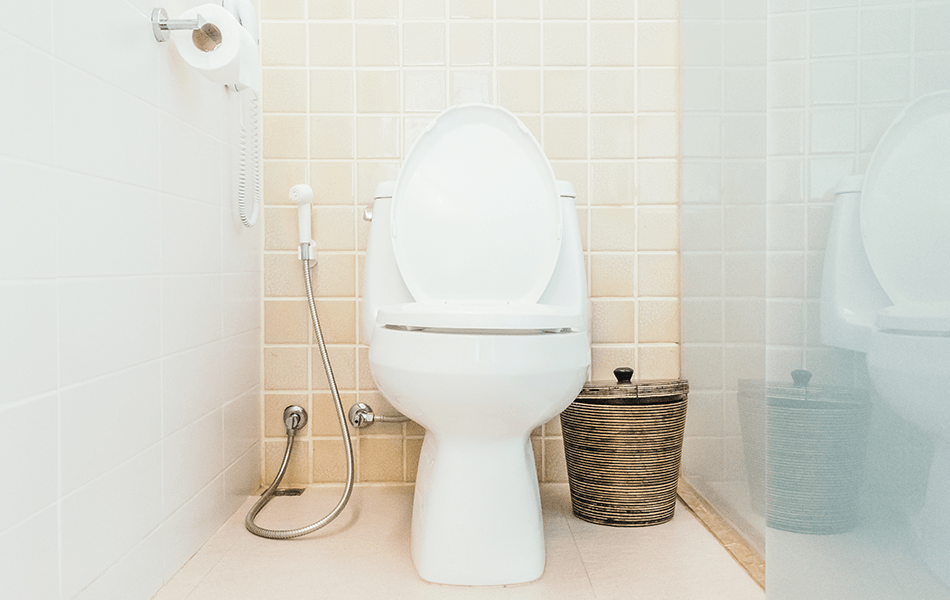
To ensure the safety and efficacy of a Bidet for Elderly with UTIs and Hemorrhoids, one must prioritize its maintenance. This involves regular cleaning, swift troubleshooting of issues, and understanding when to involve professional services. Maintaining the bidet properly ensures that it remains a reliable and effective tool for seniors managing these sensitive health conditions.
Regular Cleaning and Sanitation
Proper maintenance starts with regular cleaning to prevent the build-up of bacteria and other harmful pathogens. To minimize infection risk, the bidet nozzle should be sanitized frequently, especially for individuals with UTIs or hemorrhoids. It’s essential to use a mild, non-abrasive cleaner and a soft cloth to wipe down the bidet seat, knobs, and fixtures. For models with self-cleaning nozzles, activate this feature after each use. For Weekly cleaning steps:
Wipe surfaces with a soft, damp cloth.
Apply a mild disinfectant to the bidet seat and nozzle.
Rinse thoroughly with water to prevent chemical irritation.
Troubleshooting Common Issues
A well-maintained bidet should operate smoothly, but occasional issues may arise. Common problems include reduced water pressure, leaks, or nozzle clogging. In these cases, one should consult the user manual for specific instructions to resolve the matter.
Low water pressure: Check for any blockages or twists in the hose.
Leaks: Inspect seals and connections and tighten them as needed.
Clogged nozzle: Gently clean the nozzle with a soft toothbrush dipped in vinegar.
Summary of Best Practices
Positioning: They should sit squarely on the bidet seat. If using handheld models, they should avoid direct water jet contact with hemorrhoids.
Water Pressure and Temperature: Seniors should start with low pressure and warm water. This will prevent irritation. They can then gradually adjust for comfort and hygiene.
Hygiene: A bidet can offer a more thorough clean, essential for seniors prone to UTIs or hemorrhoids. Bidets are sanitary and safe to use when used correctly.
Drying: They should gently pat dry the area after using the bidet. They should avoid rubbing to minimize irritation.
Encouragement for Consistency and Caution
Consistent use of a bidet following these guidelines can help maintain personal hygiene, reduce discomfort from hemorrhoids, and minimize the risk of UTIs. Seniors should always exercise caution and adjust settings to their comfort and safety levels. Regular use combined with proper technique can maximize the benefits of a bidet for their health and independence.
Ensuring Comfort and Hygiene: The Benefits of Using a Bidet for Elderly with UTIs and Hemorrhoids
In conclusion, a Bidet for Elderly with UTIs and Hemorrhoids can be a transformative tool in maintaining personal hygiene while alleviating discomfort. By choosing the right bidet, adjusting its settings for gentle and soothing cleansing, and following proper hygiene protocols, seniors can experience significant relief from their sensitive conditions. This simple yet effective solution offers a hygienic, gentle alternative to traditional methods, ensuring comfort and cleanliness.
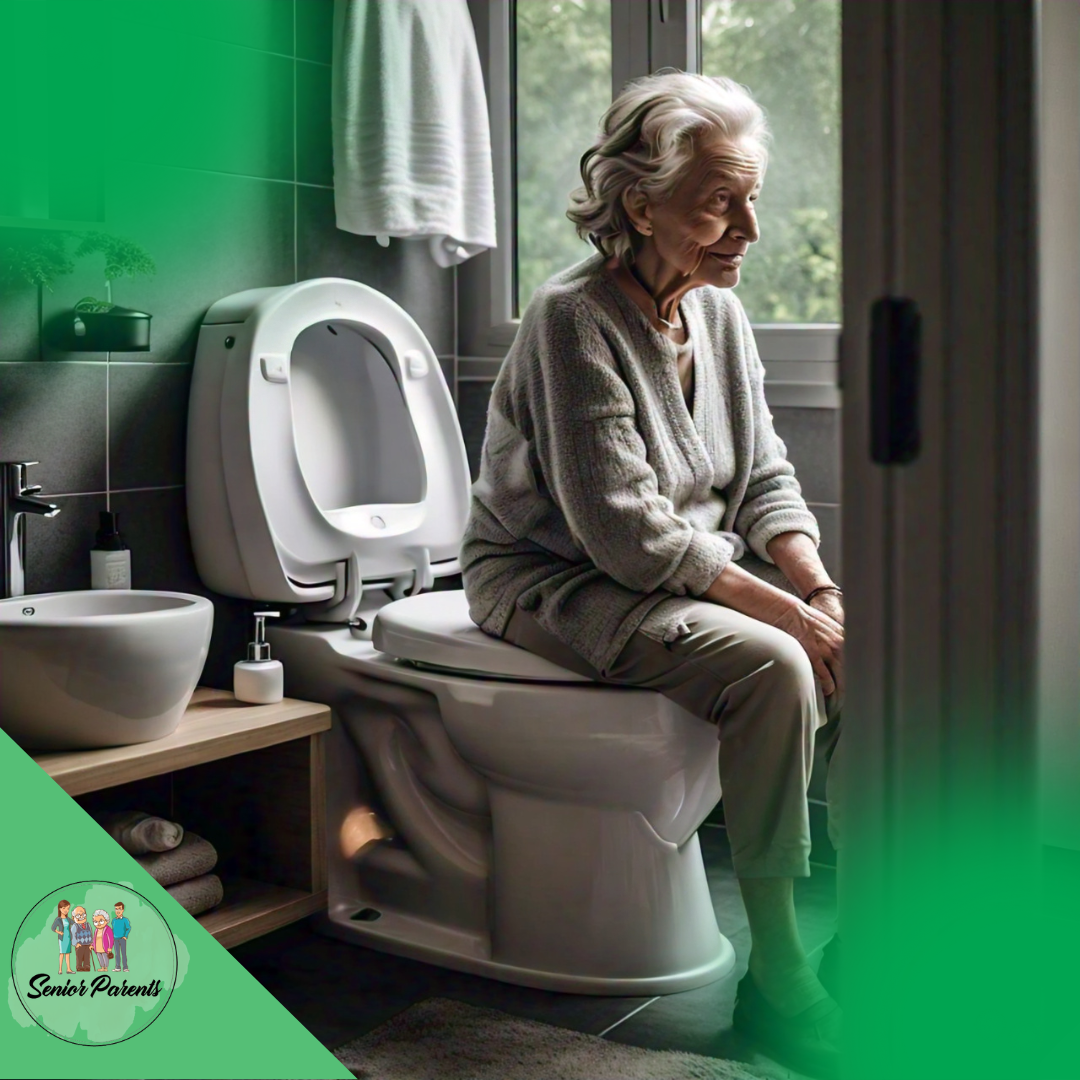
With the right knowledge and consistent use, a bidet can significantly improve daily hygiene routines for seniors. Prioritizing maintenance and cleanliness will ensure that the bidet remains reliable, promoting health and well-being for elderly individuals managing UTIs or hemorrhoids. By incorporating these practices, seniors can enjoy greater comfort and confidence in their care.
Frequently Asked Questions
Using a bidet offers both hygiene and health benefits for elderly individuals, particularly those suffering from hemorrhoids or urinary tract infections (UTIs). This FAQ section addresses common concerns about seniors’ safe and effective use of bidets.
What Are the Hygiene Benefits of Using a Bidet for Seniors With Hemorrhoids?
Bidets can provide a gentle and thorough cleaning for seniors with hemorrhoids. This reduces the need for abrasive toilet paper that can irritate sensitive tissues. As highlighted by Safer Senior Care, bidet use can help alleviate rectum pressure. This can potentially provide comfort and promote healing of hemorrhoids and anal fissures.
How Can Elderly Individuals Prevent Utis When Using a Bidet?
Seniors should ensure the bidet’s water stream is directed from front to back to prevent UTIs. This helps avoid any retrograde contamination. It’s also important for the elderly to use a bidet with adjustable water pressure. This will maintain gentle cleaning without causing microabrasions.
What is the Proper Way for Females to Use a Bidet to Avoid Infections?
For females, using the bidet from front to rear is essential. This prevents bacteria from the anal area from entering the urethra. They should also avoid the use of strong jets and scented soaps. These may disrupt the natural genital flora and increase infection risk.
Stay Connected With Us
Ready to embark on a journey filled with care and knowledge? Join us on social media for uplifting stories, expert advice, and valuable tips on supporting seniors!
? Website: Visit sr-parents.com for in-depth articles and resources on senior care, health, and wellness.
? Pinterest: Discover a wealth of caregiving tips, home solutions, and senior-friendly activities at pinterest.com/seniorparents.
? Facebook: Join our supportive community at facebook.com/sr.parents. Connect with other caregivers, share your experiences, and find motivation.
? Twitter: Follow us on twitter.com/senior_parents for the latest updates, news, and conversations about senior care.
? Instagram: Explore instagram.com/seniorparents for inspiring moments, caregiving tips, and a peek into the lives of seniors and their families.
Stay informed, inspired, and connected with our latest articles and heartwarming stories on senior care.

